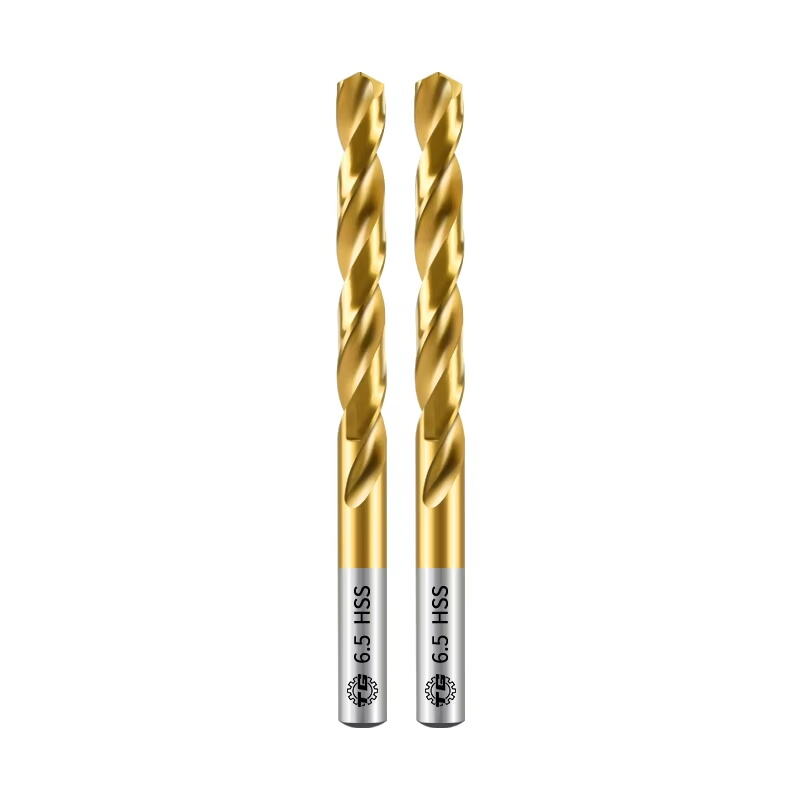Introduction: Step Drill Bits vs. Regular Drill Bits
The type of drill bit you need will vary depending on the material you are working with, whether it’s metal, wood, concrete or some other material. This article discusses the differences and purposes of two main types of drill bits: step drill bits and regular drill bits. Versatile step drill bits can open up holes in thin materials such as metal and plastic by providing many hole diameters in the same drill bit. Regular drill bits, on the other hand, are more traditional and particularized for drilling precisely into a variety of materials. Knowing the differences and what application you are going to use an abrasive drill bit on, can help you decide on the appropriate drill bits.
Design Differences: Step vs. Regular Drill Bits
Understanding the design differences between step drill bits and regular drill bits is key to selecting the right tool for your specific drilling needs. Each of these tools is tailored to different applications, making it essential to know their unique attributes.
Conical Stepped Design of Step Bits
Step drill bits, so named because they create holes in several incremental steps, are a drill bit must-have for any professional or DIYer. This unique design increases the efficiency of material removal, making your job easier. Ideal for easily cutting through metal, wood and plastic. The ergonomic benefit to step bits is significant, minimising the requirement for swapping bits out to accommodate different thicknesses. This accelerates your drilling but also reduces fatigue if you’ve got a lot of holes to make, making them perfect for jobs where multiple hole sizes are required without the speed bump of changing drill bits.
Cylindrical Shape of Regular Bits
Traditional drill bits, by contrast, are typically cylindrical in shape, perfect for drilling single diameter holes. This traditional design is especially beneficial when precision hole size and location is needed. While not as versatile as the step bits, they perform extremely well for those tasks where a steady hole size is critical. Concrete regular bits are made of high-speed steel, cobalt, or carbide, so depending on the material, the life span of these may vary. High-speed steel is low cost and is durable, cobalt can be used at a higher temperature than high-speed steel, and carbide provides higher hardness and heat resistance, and is used when high drilling depth and precision is required, but also on more demanding drilling conditions.
Hole Size Versatility: Multiple Sizes vs. Fixed Diameter
How Step Drill Bits Create Graduated Holes
Step drill bits are designed to make progressive holes for multiple sizes with one bit. Users are therefore able to alternate to a larger size, as and when they wish, without having to change the bit several times which saves time and effort. From a practical standpoint, this versatility is especially interesting in applications like electrical installations and plumbing where time savings really matter. For example, an electrician can easily make various sized holes in a single pass, increasing productivity. Professionals have begun to recognize this time saving benefit as well: A study of professionals by the Tool Industry Association found that those who use step drill bits saved an average of 30% of the drill time for certain projects compared with regular twist drill bits[source?] This efficiency reduces your time to complete a project and saves you the effort to do a more difficult tool, and helps to extend the life of these bits and the equipment it's used on.
Single-Size Limitations of Regular Bits
The conventional drill bit, however, is inherently manufactured in discrete diameters which require a plurality of the bits to be available for various applications. This drawback can have a huge effect on how efficient the project is and can require constant bit changes and very large tool management. For contractors and DIYers, that translates into keeping stock of a variety of bit sizes, which can get tiresome. And, these restrictions can add extra time to the project because working efficiency is interrupted with frequent need to change bits. "Regular bits provide precision, but they limit your flexibility, and highlight the importance of select toolkit," says Mike Turner, innovator of a construction tool accessory staples. For all tasks that demand an exact, single-size hole, regular bits are the ultimate in accuracy. But knowing their limits allows you to strategically apply them: To use the appropriate bit for the right job, and, thus, improve the quality of a project overall.
Material Suitability: Thin vs. Thick Applications
Step Drill Bits for Sheet Metal and Thin Plastics
Step drill bits are especially useful for processing materials such as sheet metal and thin plastic, as they can form a clean hole without deforming the material too much. Like an ordinary bit, a step drill bit can penetrate through the sheet of metal, but it does so more smoothly as the steps in the bit allow for easy drilling and the elimination of chips of the material - removing the chance of tearing that you might find with a normal bit. This exactness is very important in situations like electrical installs and auto work where the integrity of thin sheets has to be protected. Most industry standards, most notably electrical codes recommend the use of step drill bits for conduit fitting work. This suitability is both pragmatic and conforming to professional standards and develop practice and, thus, for any fine works, leather institutions are indispensable.
Regular Bits for Wood, Thick Metal, and Masonry
Typical drill bits, on the other hand, are ideal for strong materials such as wood, larger metal and masonry, the kind of materials that require strength and sturdiness. Their construction prevents them from getting deformed or dull after heavy use, and they are perfect for construction as well as woodworking. The regular bit is solid and can take the high pressure and force that boring through hard materials demands, something that a step drill bit cannot do. For example, in woodworking, where depth and precision are required, there's no reason that regular bits won't get the job done without ruining the integrity of the materials. Albert Heir Discuss in the compare with standard drill bits, like carbide or HSS, or masonry work such as concrete and bricks. Experience based in construction as well as woodworking indicates that typical bits are extremely they are effective at efficiently drilling through some tough materials.
Key Applications for Each Drill Bit Type
Step Drill Bits in Electrical and Plumbing Work
Step drill bits are an important requirement the electrical & plumbing work because you need to have a perfect size of the hole at all times and for this purpose step drill bits are designed. These characteristics are particularly advantageous in the installation of conduits or fixtures, for example, in which precision dimensions are important. For example, when doing electrical work, step drill bits provide the versatility you need to drill access holes for running wires through thin metal or plastic. Equally good in plumbing applications, too, they make those perfect holes for your pipes and fittings, but without any deformation of the material (so you don’t have leakages in the near future).
What’s more, industry metrics demonstrate step drill bits are becoming more common in these fields. Their time-saving of reducing the times necessary for bit change are indicated in reports that they are becoming to be used more and more. This transition is facilitated by the fact that these units save time and labor in the shop, and they continue to be an attractive alternative for professional tradesmen and women using on-the-job tools.
Regular Bits in Construction and Woodworking
Commonly used for construction, woodworking, they are ideal for drilling a fixed diameter. They are engineered for activities that require use of drill bits of the same types and size, like making dowel and pilot holes. Stability and predictability Those particular tasks require the sharpness and stability that regular bits deliver to enable precise and repeatable results. For instance, precise clean holes are critical for secure fastening or doweling in cabinetry, and a solid tight joint also signifies a great deal of strength in your construction.
Then you read builder’s and carpenter’s opinions that normal bits are extremely reliable on heavy duty uses as well. These same professionals frequently cite the toughness and durability of such bits when compared to the harsh conditions of construction sites. This is particularly important when working with dense materials such as hardwood or multiple layers of building material, where consistent cut quality is a must. It can be trusted to maintain its sharpness and overall effectiveness, enhancing productivity on the jobsite.
FAQ
What materials are step drill bits best suited for?
Step drill bits are ideal for thin materials such as sheet metal and thin plastics, allowing for smooth transitions between different hole sizes with minimal deformation.
Can regular drill bits be used for thin materials?
While regular drill bits can be used for some thin materials, they are primarily designed for robust applications such as wood, thick metal, and masonry where precision and depth control are essential.
Why are step drill bits preferred for electrical and plumbing work?
Step drill bits provide the flexibility to create variable hole sizes, which is often required in electrical and plumbing work, reducing the need for multiple bit changes and enhancing efficiency.
What are the advantages of regular drill bits?
Regular drill bits offer precision for single-diameter holes, making them ideal for woodworking and construction tasks where consistency and accuracy are crucial.


